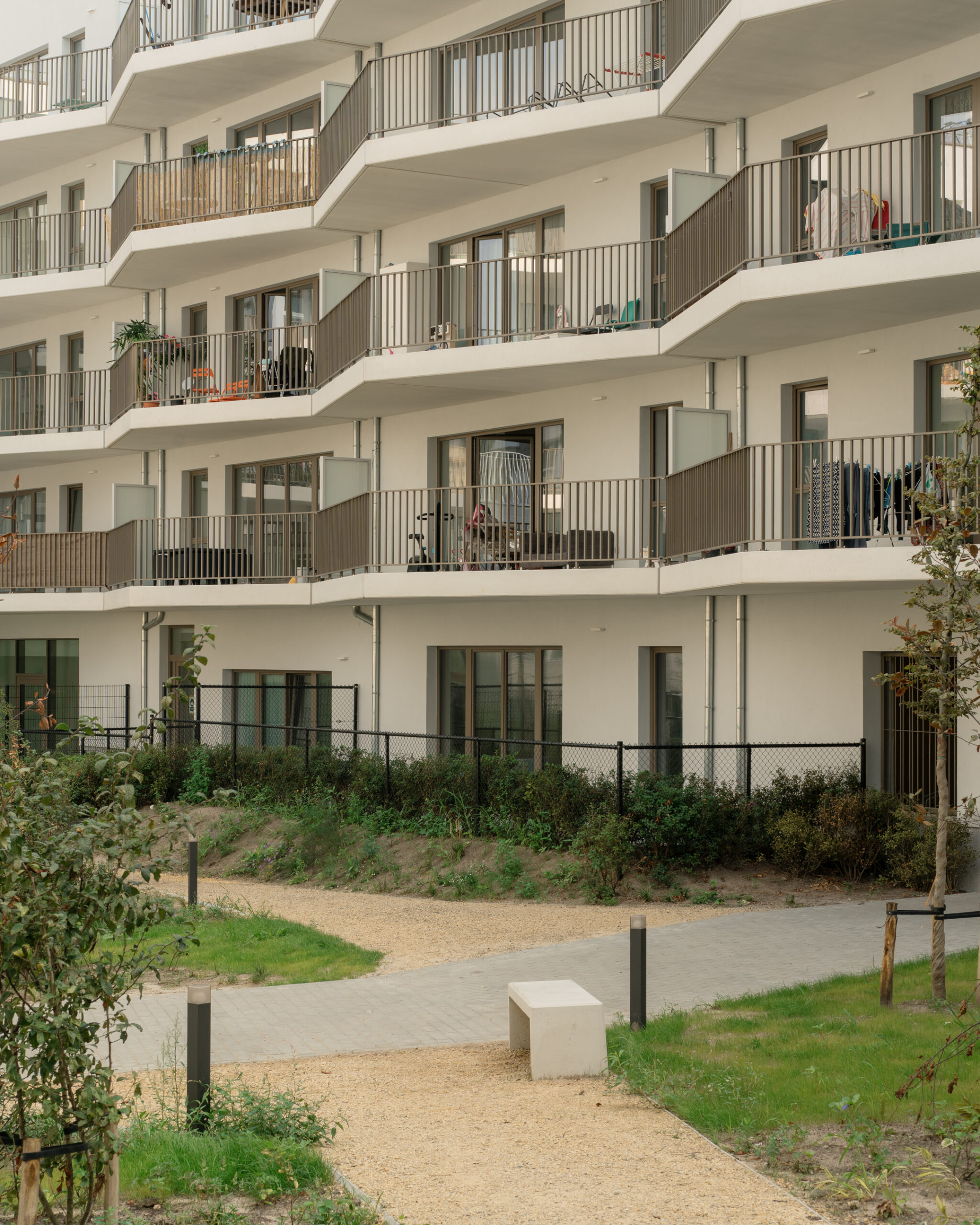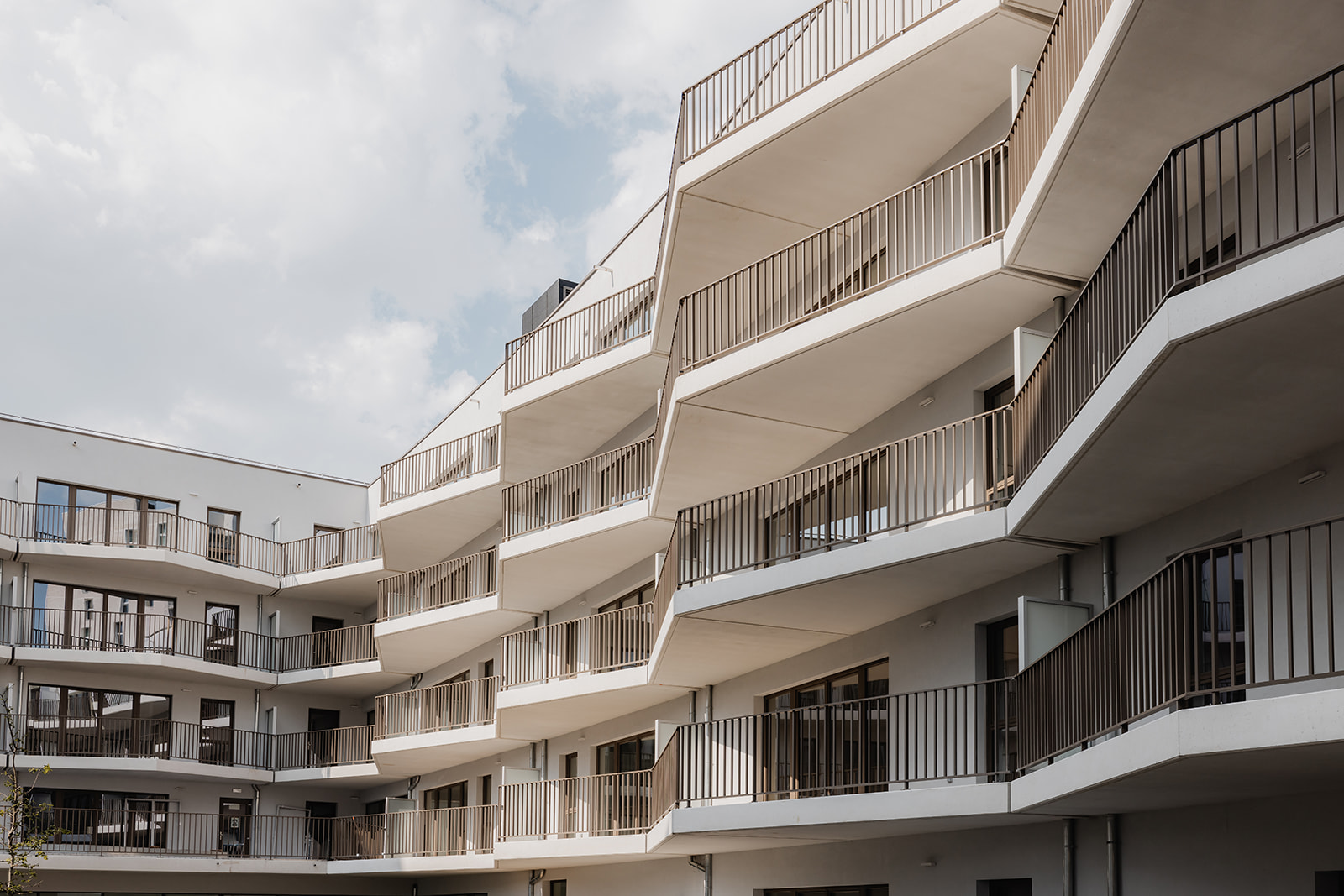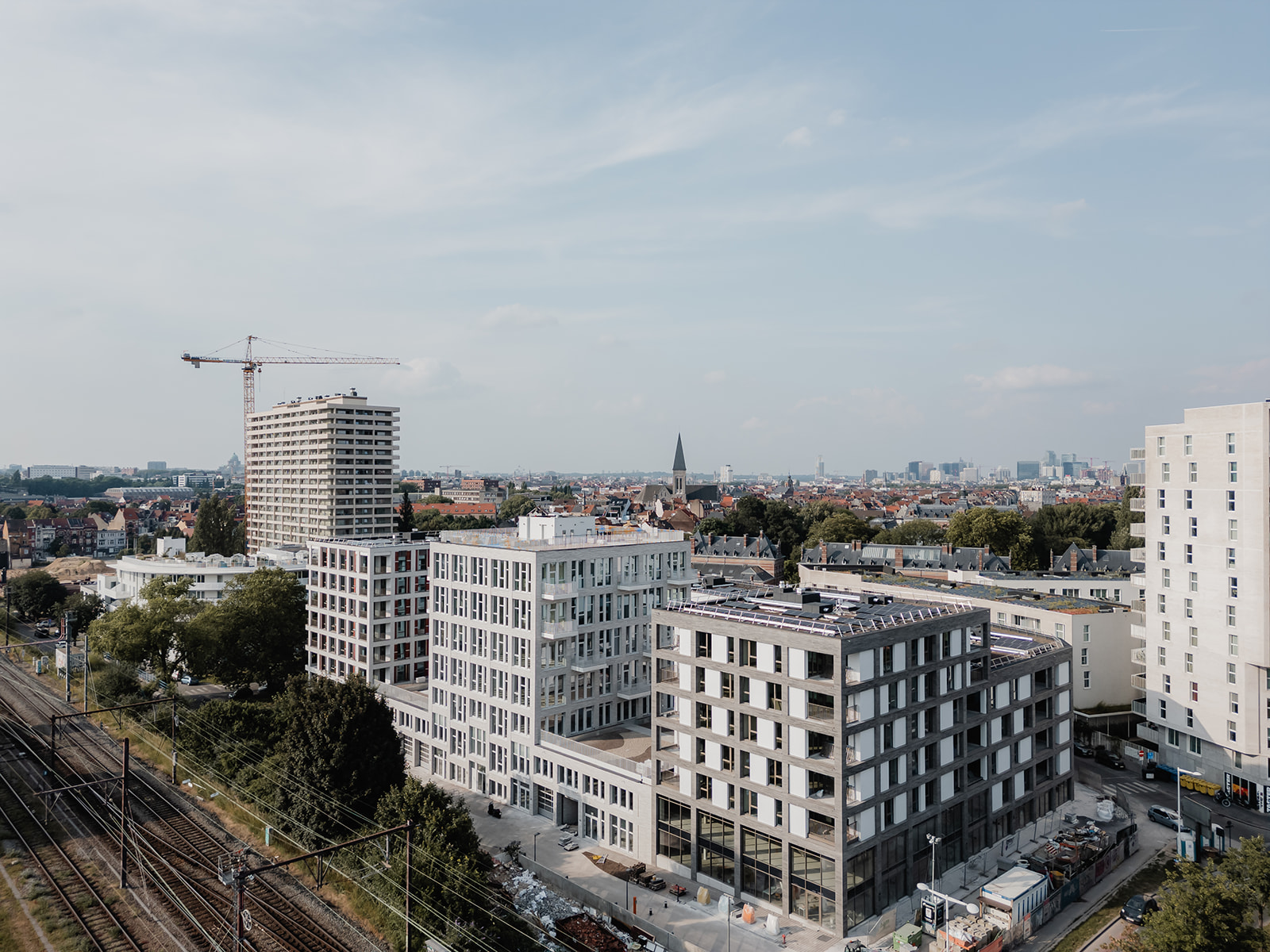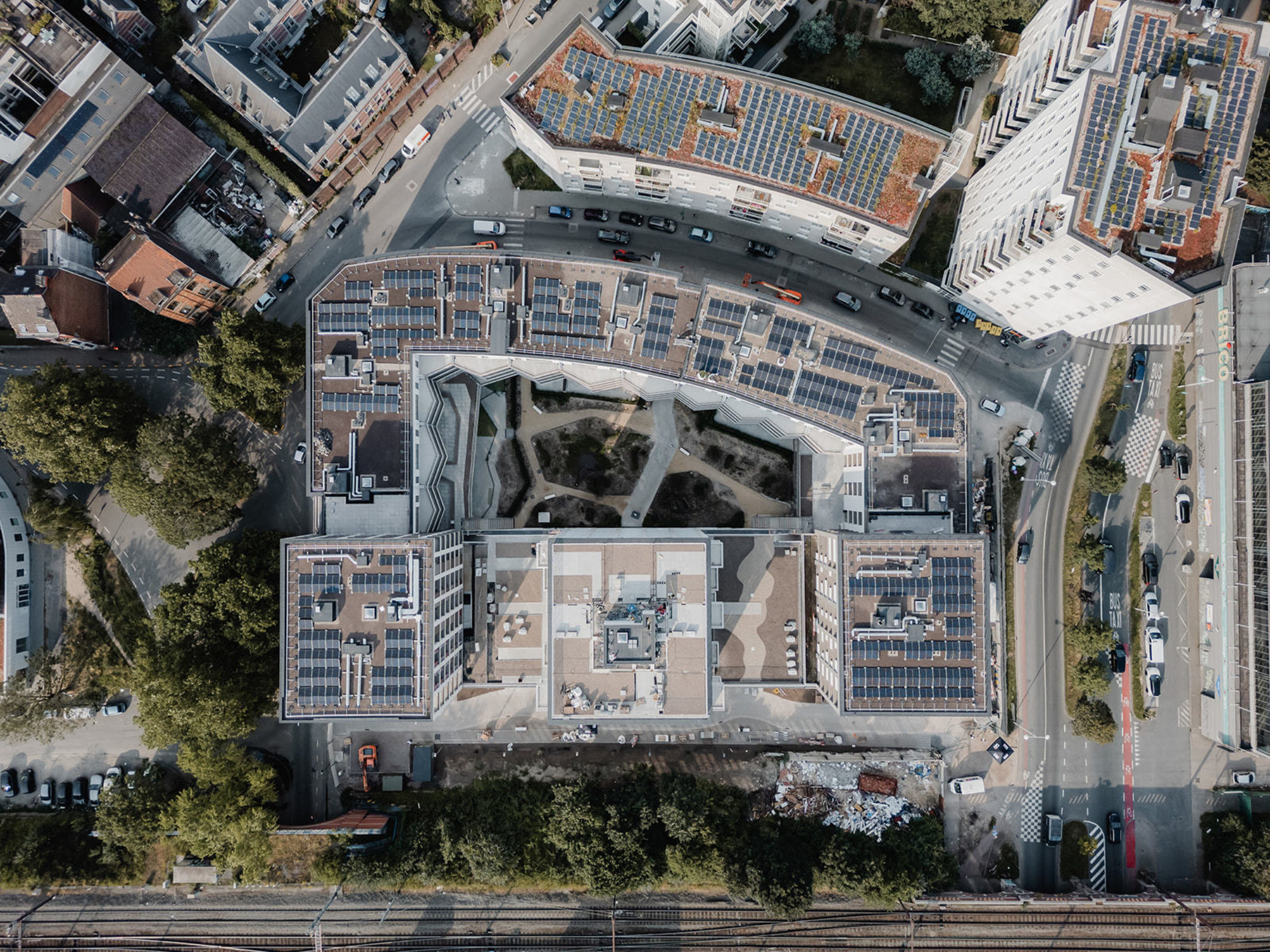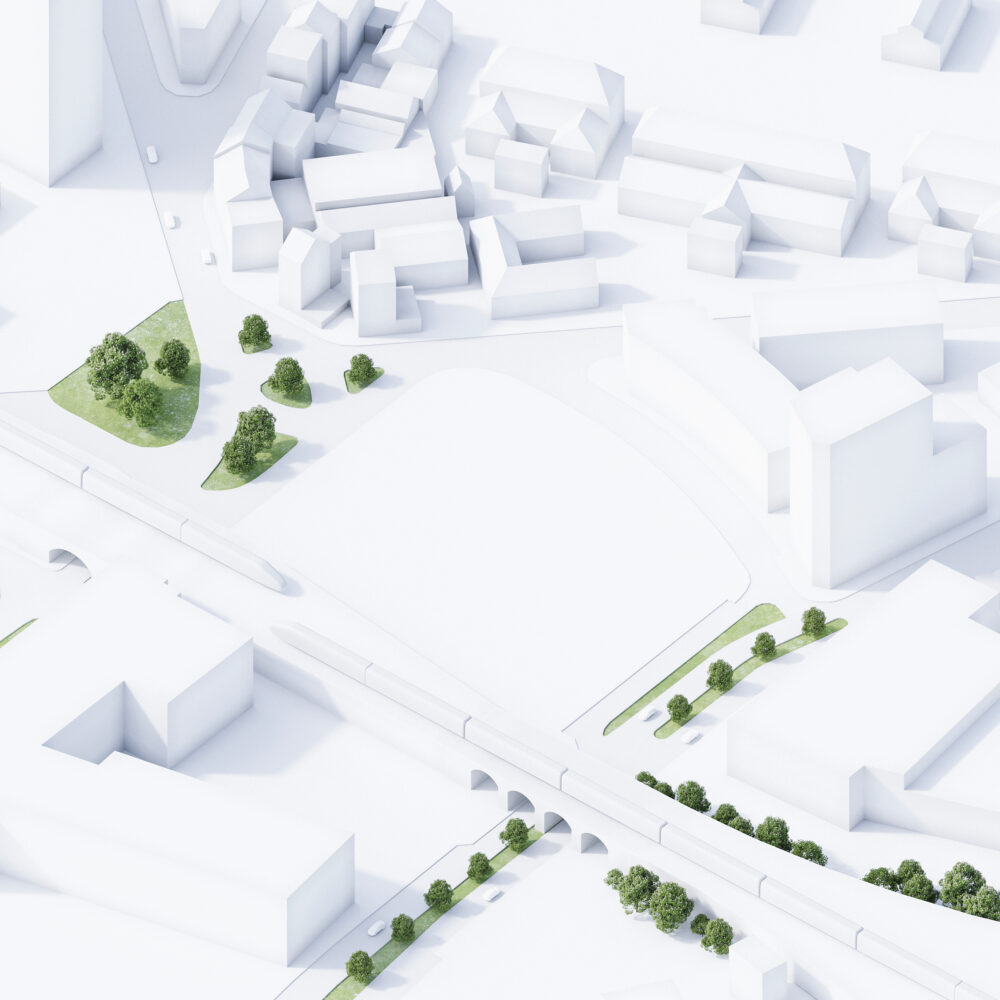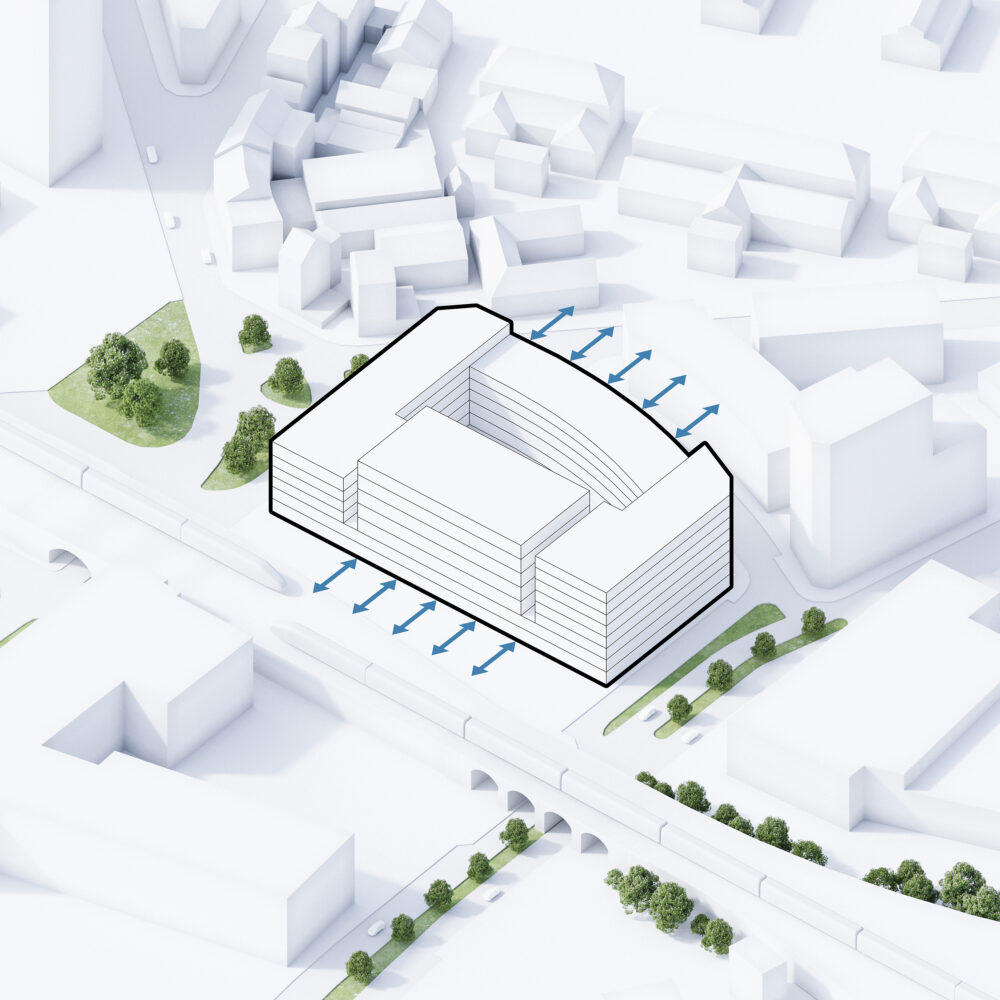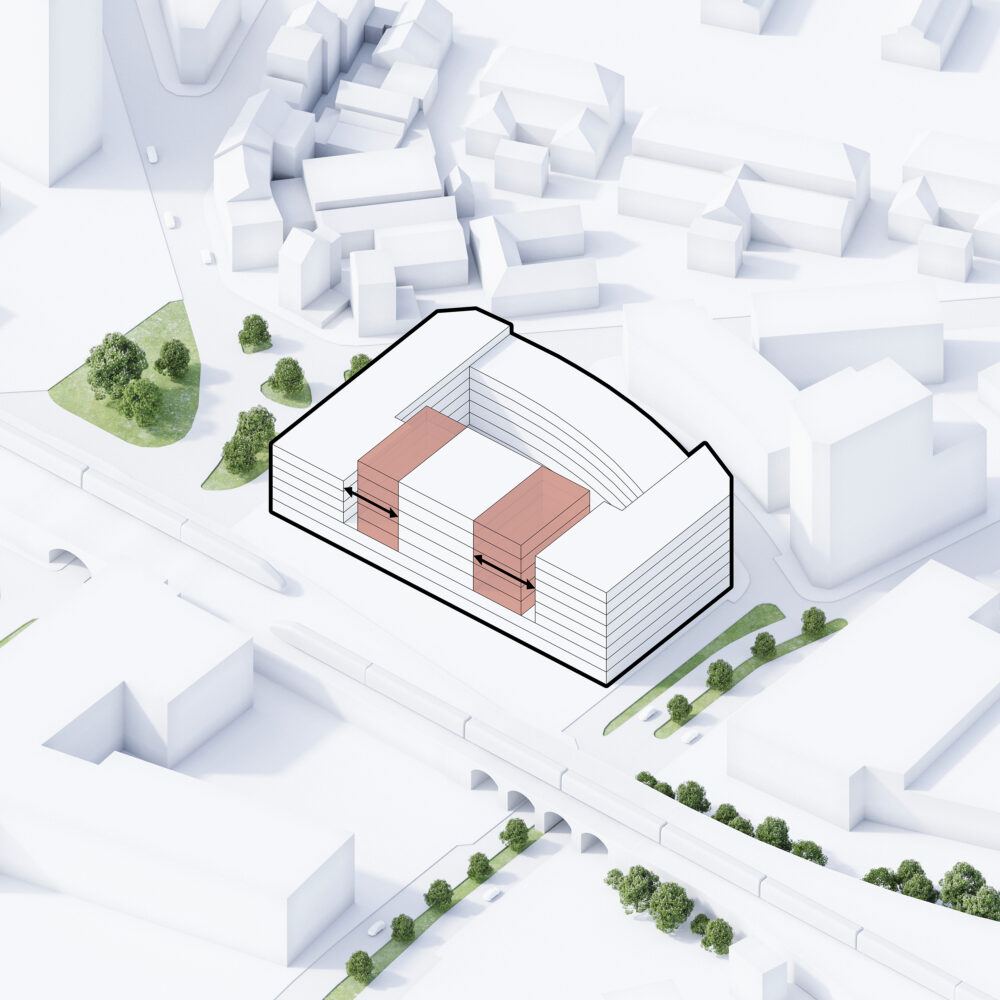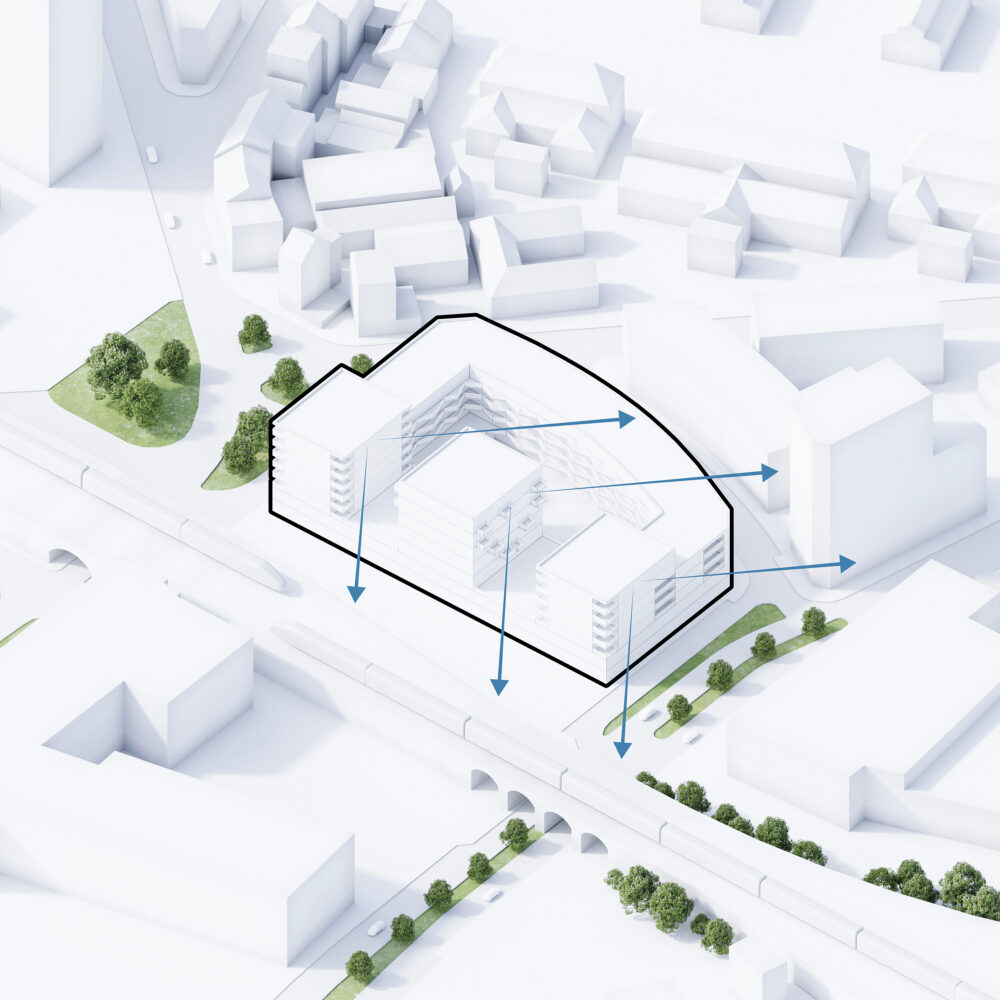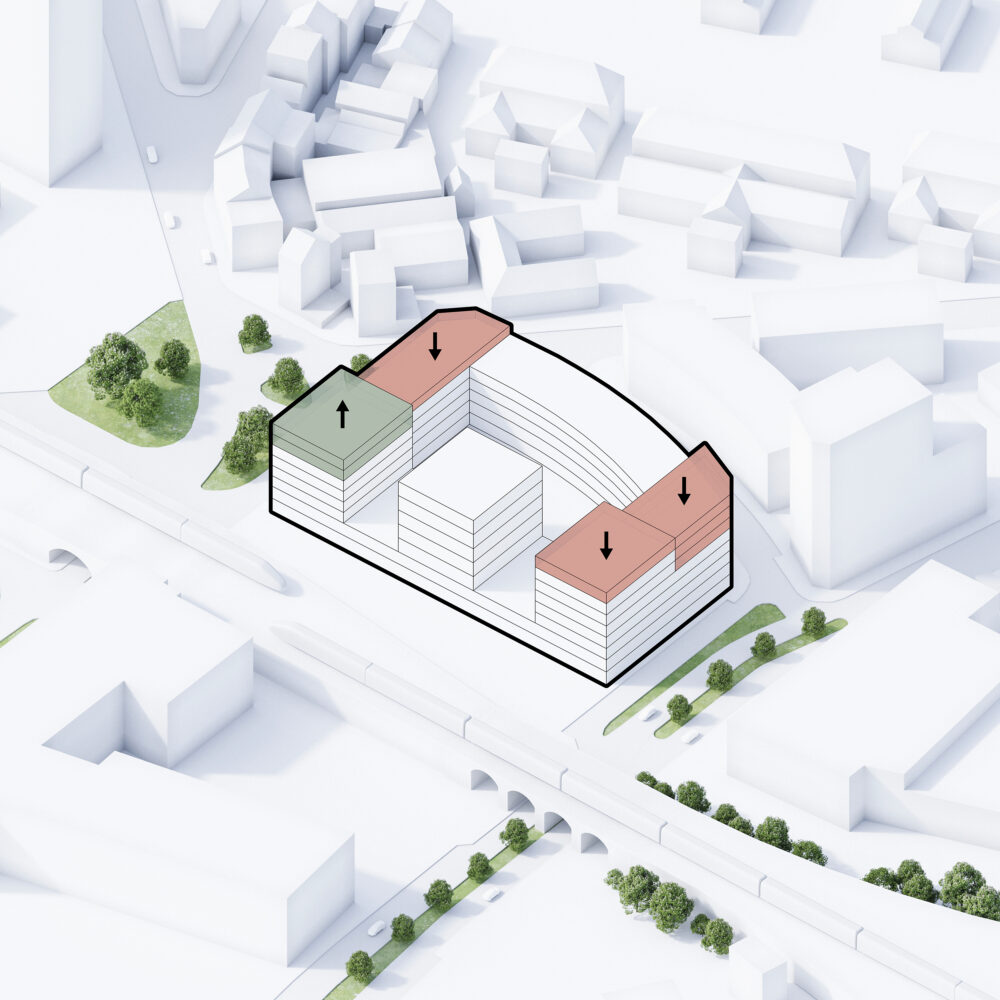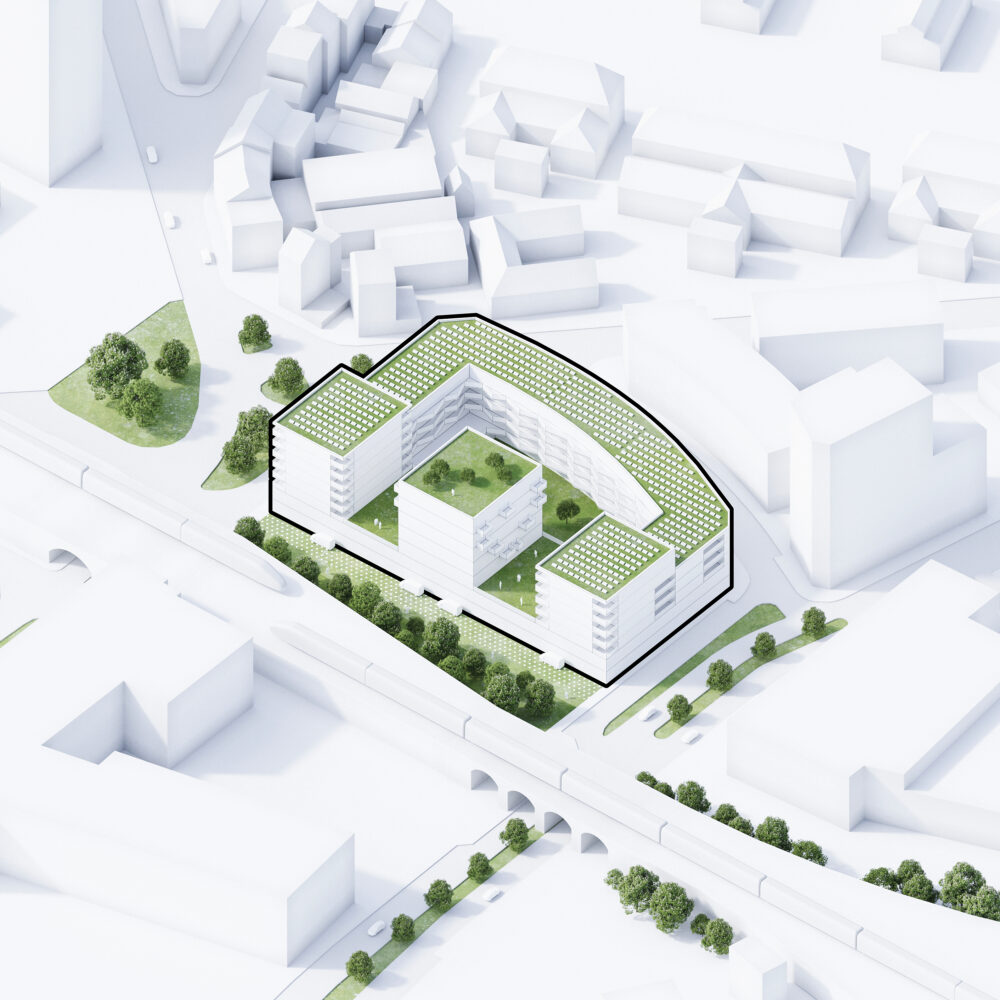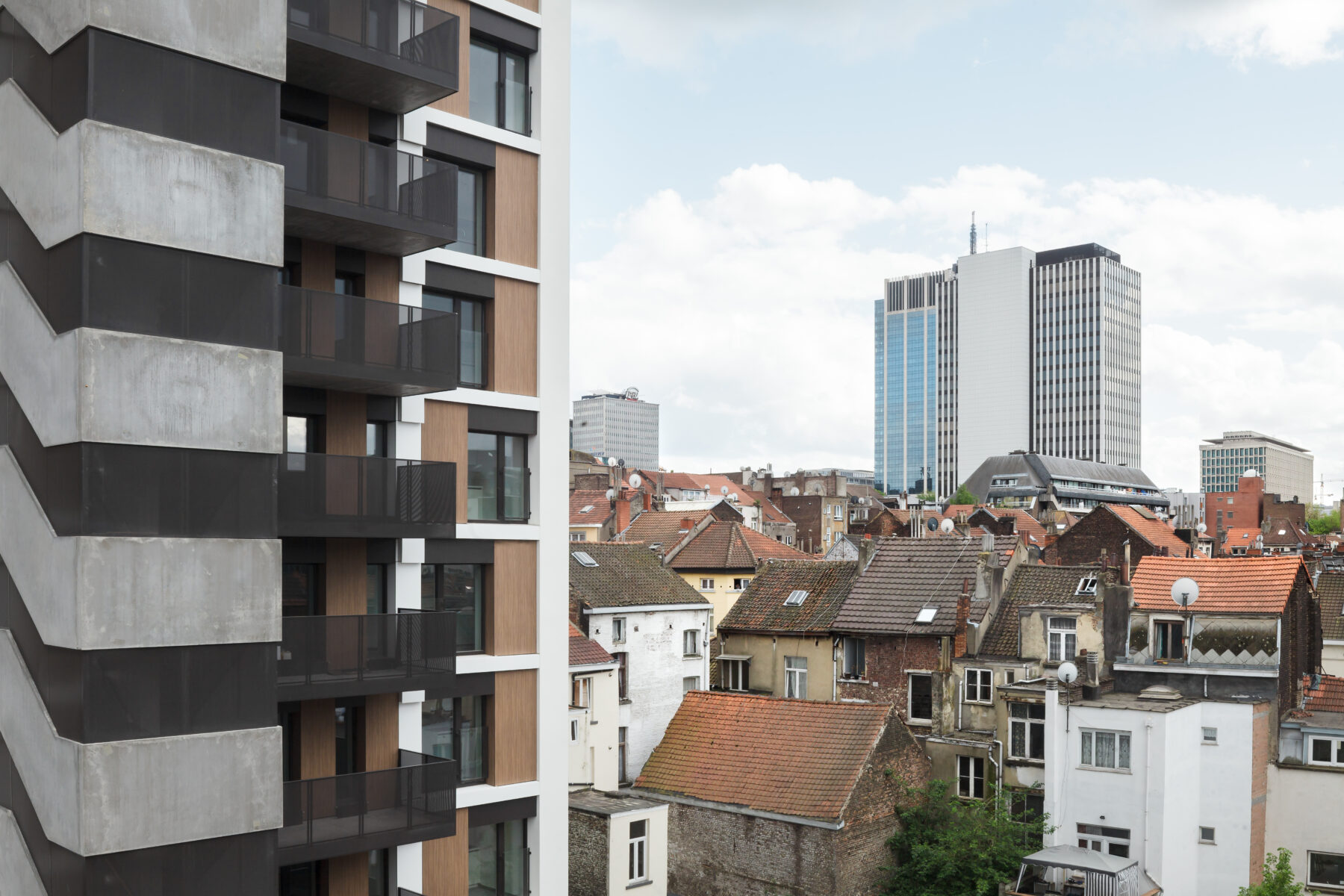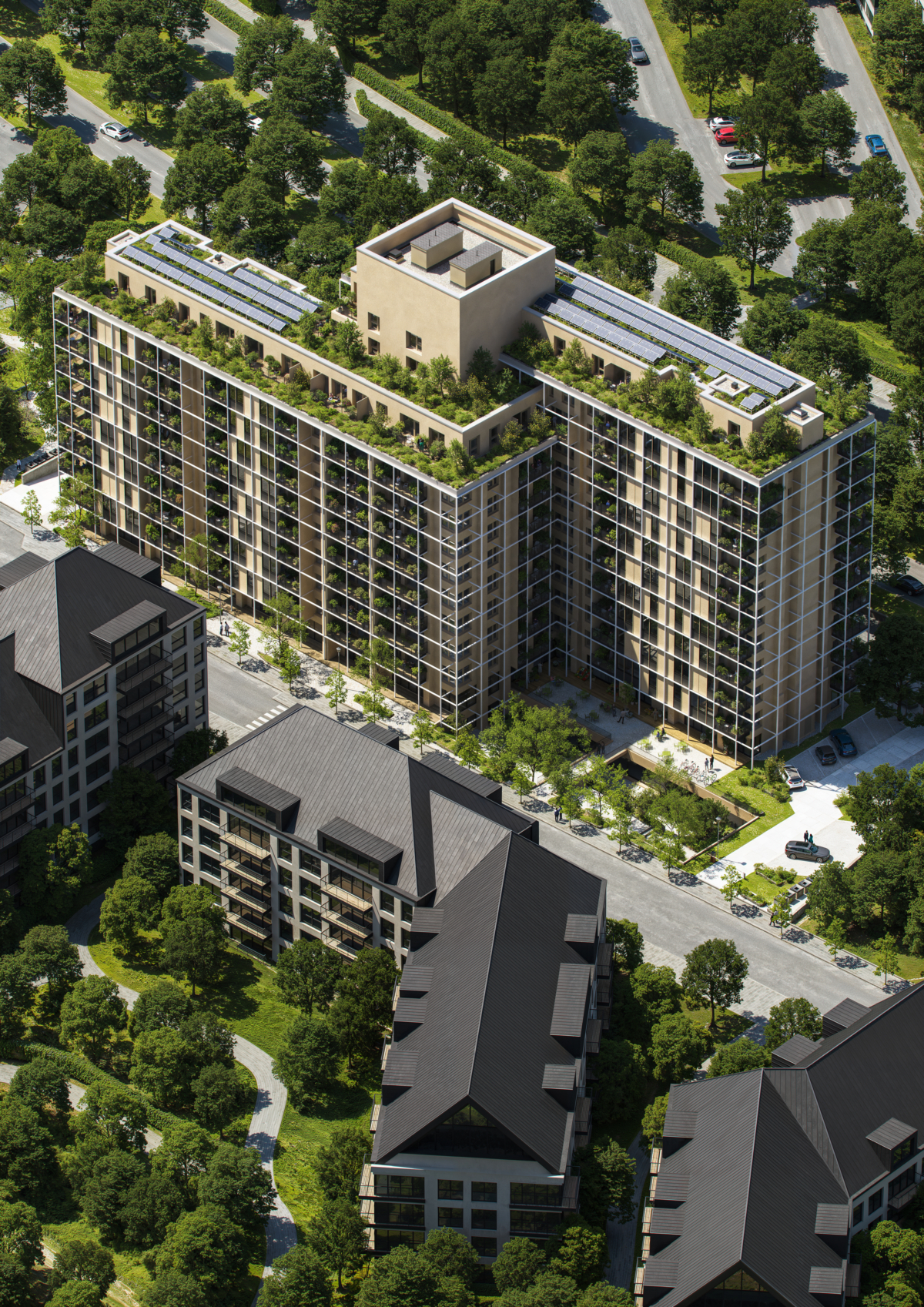Citygate 1 – Marchandises is a 21,000 m² mixed-use block built on modular logic. A ring-shaped volume encloses a generous courtyard that functions as a shared green space. The structure follows a regular grid, referencing the site’s industrial heritage while enabling long-term reversibility. Within the BAM section, every unit—whether for living, working, or both—is based on the same base module, allowing uses to shift over time. Access is multiplied: each core connects to both street and garden. The plinth integrates workshops, a nursery, and street-facing units that can host retail, office or service functions, activating the perimeter on all sides. Above, housing, light industry and workspaces are stacked by logic, not hierarchy. The architecture remains direct and robust: modular bricks, exposed structure, prefabricated elements. BAM spaces, designed as flexible units for multiple program types, make reversibility tangible. Daylight, green roofs and greywater reuse are integrated throughout. The rooftop extends the courtyard upward, forming a collective, planted landscape.
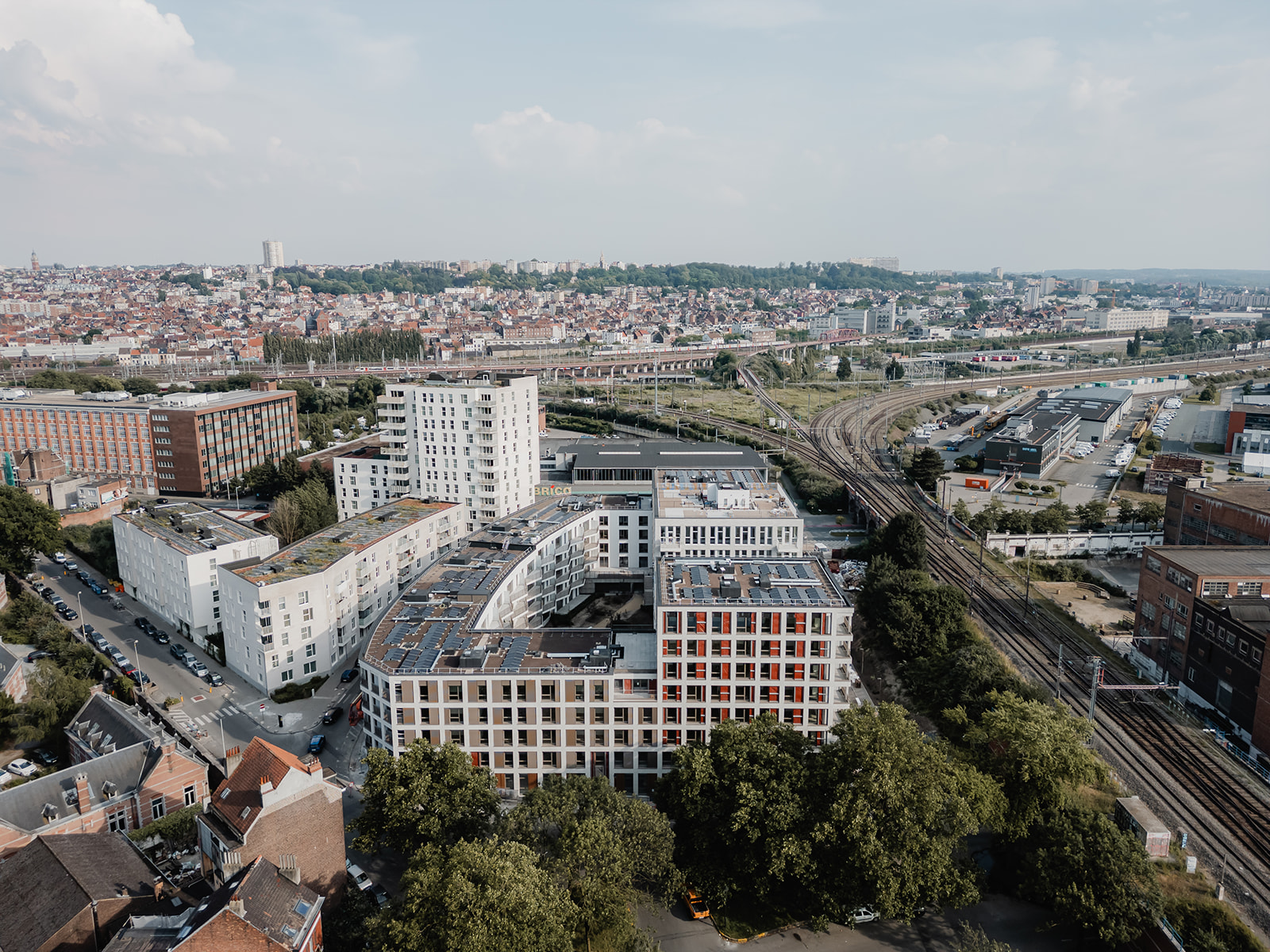
Marchandises
- 2018 - 2024
- Citydev, Kairos
- Architecture, Climate design
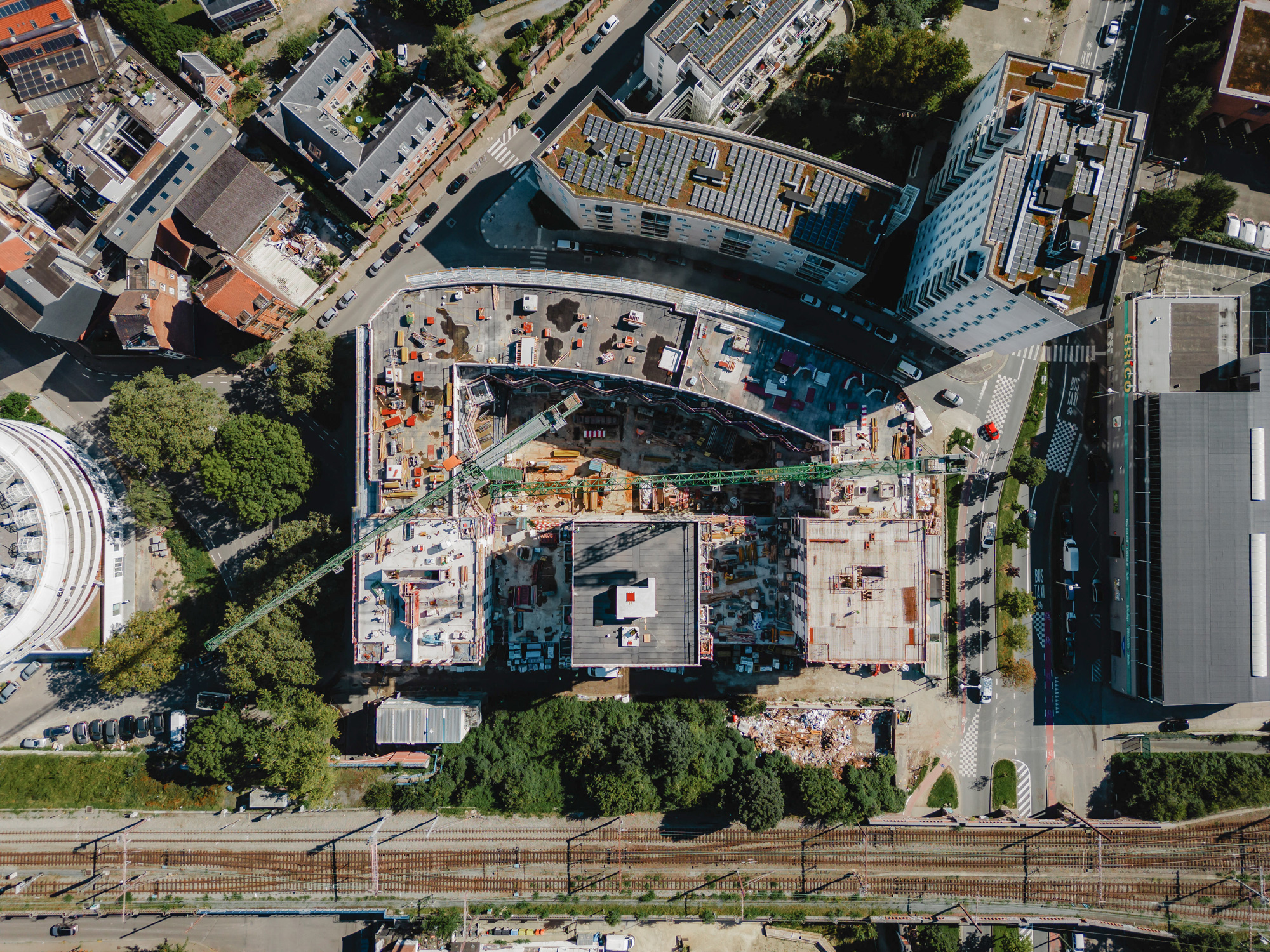
A dormant brownfield at a hinge point in Brussels, where the industrial edge of Anderlecht meets the density of Cureghem and the infrastructure of Gare du Midi. The site occupies a morphological threshold: it is fragmented, lacks coherence, and remains largely inaccessible at its centre. Public space is residual, housing is underprovided, and productive functions are still rare in the immediate context. The site also borders a major railway corridor, amplifying its role as both physical barrier and potential connector. In response to this context, the client formulated a clear ambition: to re-anchor productive activity within the city and create a building capable of supporting a layered, mixed-use program. This ambition had to be developed within the constraints of an existing subdivision permit, which fixed key parameters such as building heights and volumetric outlines. The challenge was to design a structure that could act as a connector: linking districts, mixing uses, and reintroducing production into the urban fabric. A building that could carry housing, childcare, retail and workspaces, while remaining rooted in the site’s industrial identity.
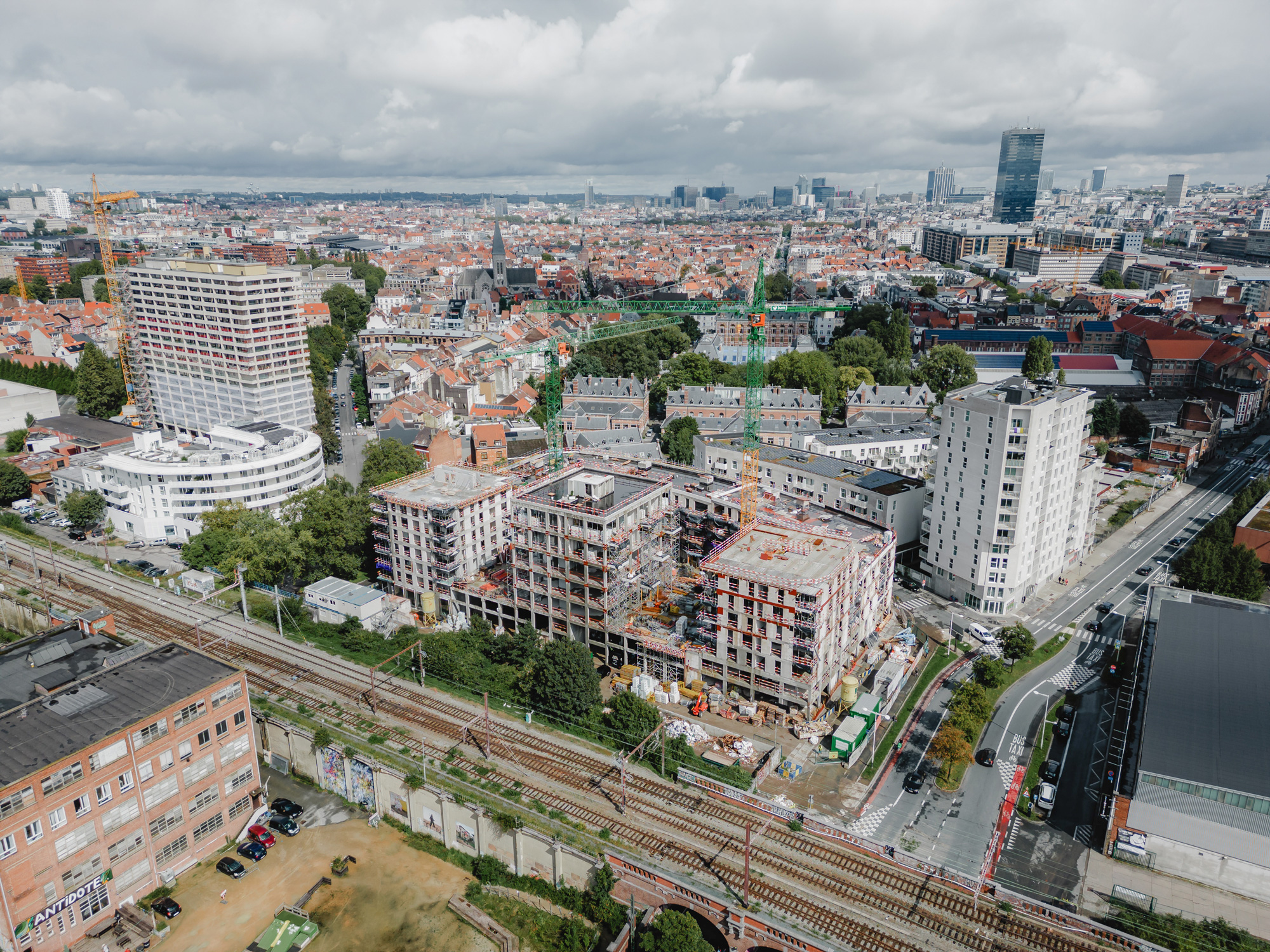
The building does not simply stack functions; it weaves them. The project transforms an infrastructural edge into a shared space, absorbing the pressure points of the city and turning them into usable, collective ground. The building embraces the railway as a resource, not a barrier, and creates continuity across formerly fragmented urban zones. Green corridors, vertical planting, and shared gardens bring biodiversity from soil to roof. Energy is produced on site through solar panels, while rainwater is harvested, buffered and reused. Strategies for daylight, natural ventilation and shading are embedded into the design. But impact goes beyond performance: shared stairs and collective spaces foster interaction, while preserving privacy. BAM units support gradual shifts in use, and the architectural grammar invites appropriation. Flexibility is structural, not cosmetic — and rooted in the conviction that buildings should evolve with their users.
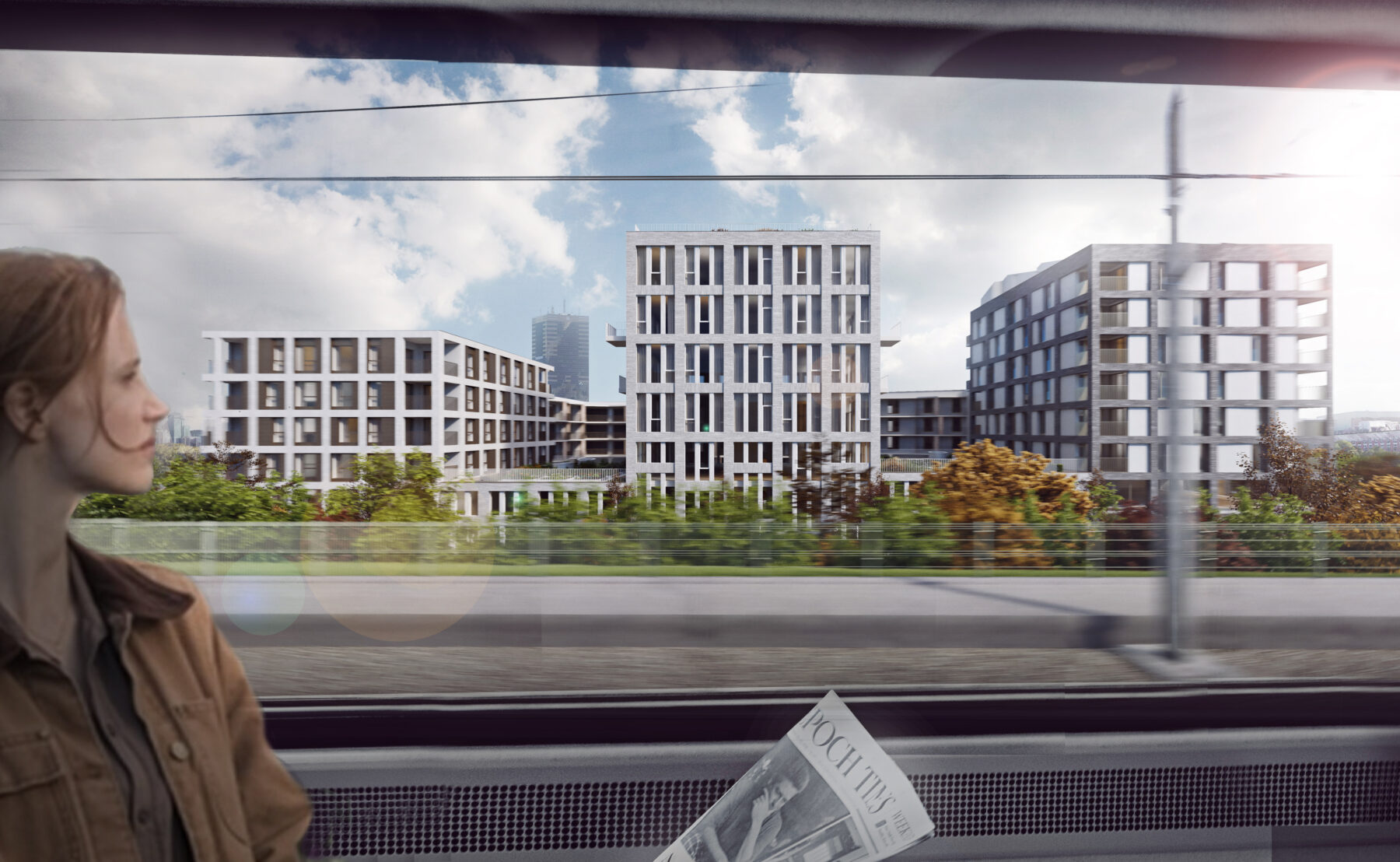
An interactive visual window into our planet's
changing climate, based on the most recent
measurements and climate model predictions
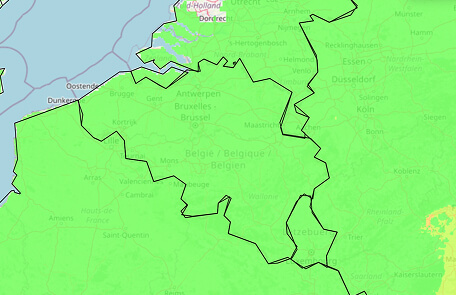
Brussels’ climate is warm and temperate. Rainfall in Brussels is fairly consistent throughout the year, with precipitation even in the driest months. According to the Köppen and Geiger classification system, this location is designated as Cfb, typical of oceanic climates. The average annual temperature recorded in Brussels is approximately 10.5 °C, while total annual precipitation reaches around 850 mm.
| Location | Brussels, BEL |
| Status | Built |
| Type | Competition, 1st Prize |
| Size | 24,334 m² |
| Collaboration | Urban Platform, ORG, Establis, Sweco |
| Awards | Best residential development RES awards 2024 |
| Image Credits | Please note that we have used a small number of images for which the copyright holders could not be identified. In these cases it has been our assumption that such images belong to the public domain. If you claim ownership of any of the images presented and have not been properly identified, please notify A2M and we will make a formal acknowledgement. |
The transformation combines different structural approaches to serve distinct programmatic needs. The BAM section is built on a regular post-and-beam grid, with generous spans and overdimensioned floor slabs enabling long-term reversibility. A fixed central core organises circulation and services, while the surrounding floor area remains open to changing configurations. In contrast, the residential volumes follow a more conventional structure, with load-bearing façades, structural walls and fixed circulation cores. Here, the emphasis lies on spatial clarity and high-quality housing in line with Citydev requirements. Across the project, multiple access points connect street, courtyard and roof. A continuous landscape links planted patios, green roofs and infiltration zones, supporting biodiversity and regulating water on site. Solar panels, thermal mass and passive cooling contribute to energy performance. Thirty percent of the housing units are designed as zero-energy homes, with an annual consumption of 0 kWh/m², thanks to high-performance envelopes and on-site energy production. Blue and green roofs buffer and reuse rainwater. Technical systems are integrated discreetly. Bike infrastructure and EV-ready parking support soft mobility. Citygate 1 – Marchandises is not a fixed typology, but a system that accommodates permanence and change at once.
